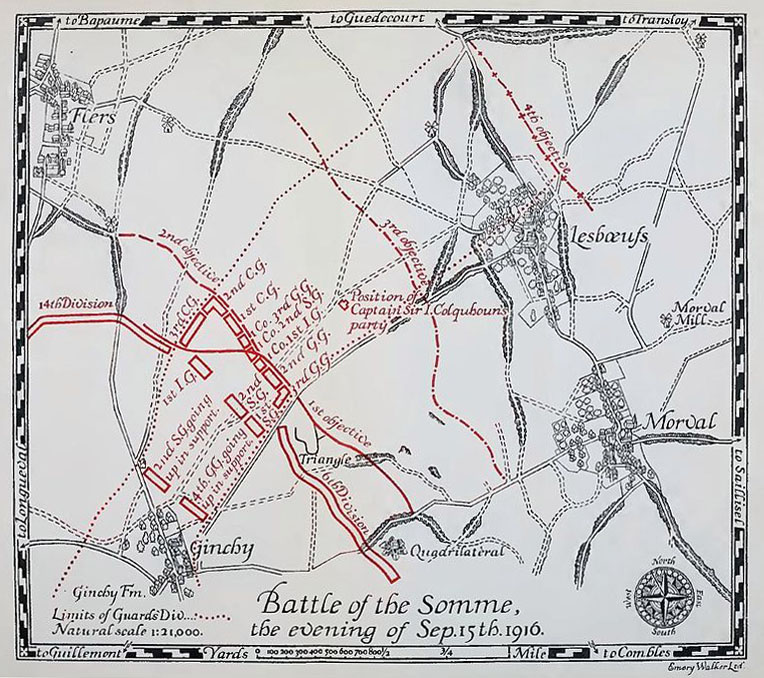Benjamin Povey
Sergeant 13904 Benjamin Povey, 9th Battalion, Norfolk Regiment
Benjamin was born in Newbury in 1885, the son of James Povey and his wife Hannah, née Nicholls. He was the second of their seven children; his arrival was preceded by William Robert (born 1894) and followed by Arthur James (1887), Harry Christopher (1889), Elizabeth (1891), Frederick John (1893), and Ellen Annie (1895). Shortly after Ellen was born her father died aged only 39, she would never know him.
Hannah was left with seven children to raise, the eldest aged only eleven. She worked as a charwoman, doing her best, hopefully with the support of the wider family. When the children left school and were able to contribute to the family income life must have become somewhat easier.
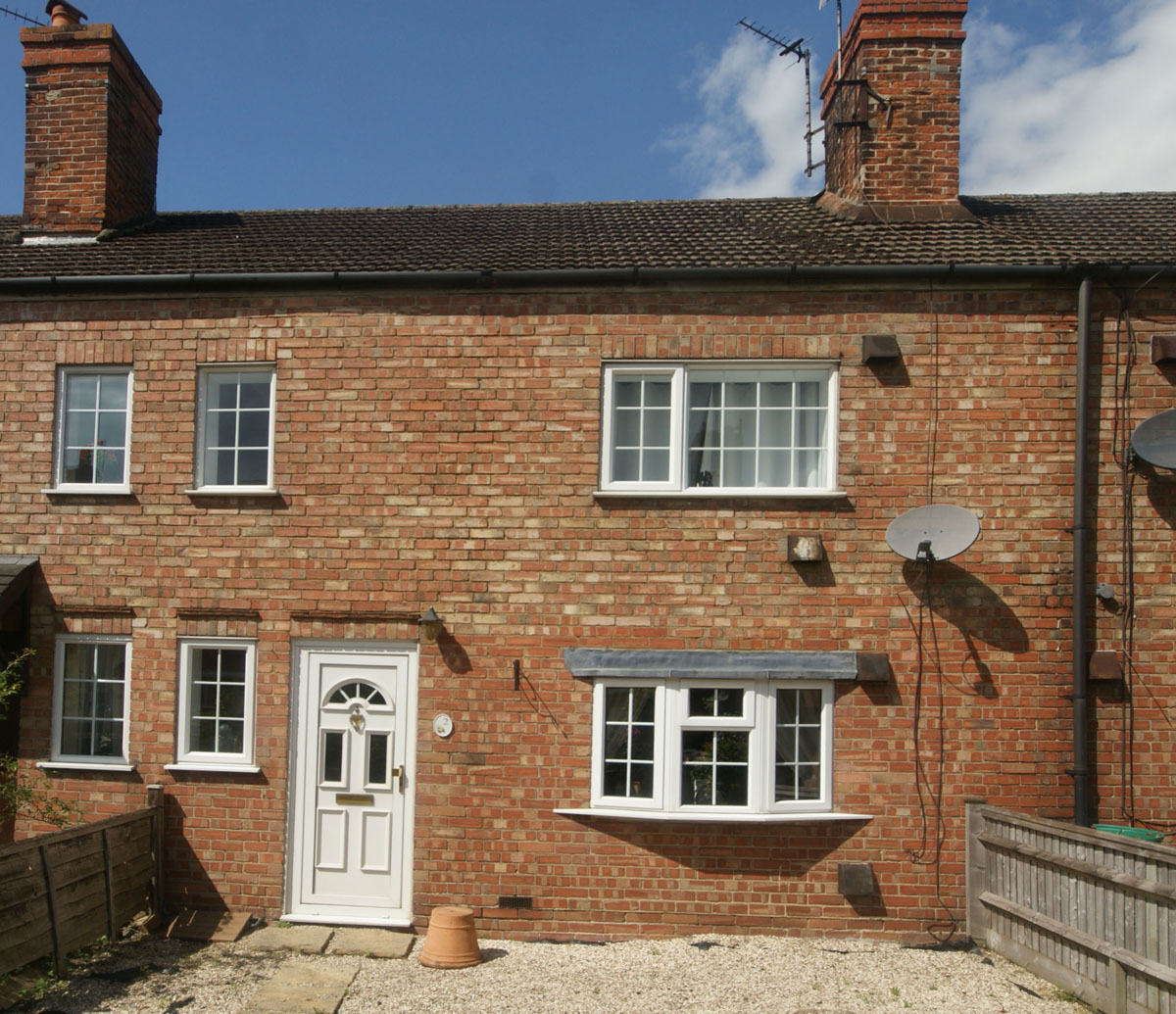
2 Kennet Place. |
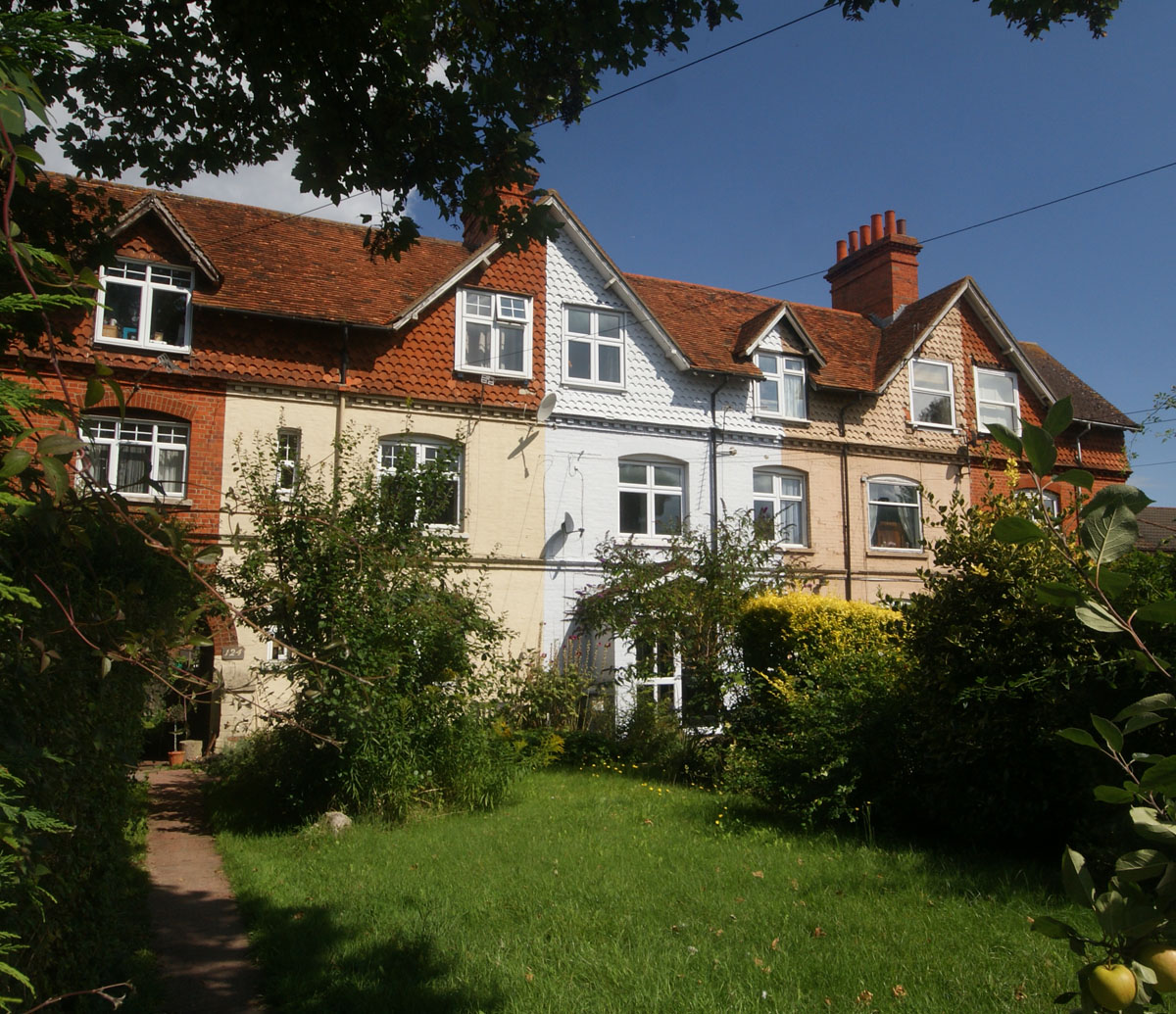
4-7 Northampton Terrace. |
The 1911 census records the family living at 4 Northampton Terrace, Newbury, previously they had been living at 2 Kennet Place. The two addresses are very close together on the London Road to the east of Shaw Road. By this date there were five children at home, all working, so their mother appears to have been able to take a rest from charring – she is recorded as having no occupation.
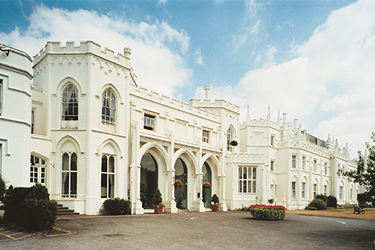
The Priory, Benjamin's place of employment, still going strong in 2016. |
When war arrived on 4 August 1914 the Povey family responded patriotically, Frederick was already in the army and he was rapidly joined by all of his brothers:
Newbury Weekly News, 10 December 1914 – Local War Notes
Mrs Povey, of Northampton Terrace, has five sons in His Majesty’s Forces. One is on duty with the RAMC at the Front [Frederick], and on the outbreak of war one joined the Royal Berks [William], another the Norfolks [Benjamin], a third in the Berks Reserves [Harry], and the fourth in the National Reserves [Arthur]. Mrs Povey says she is proud of them, but would be happier if they were all at home again around her table.
An early tragedy had already struck the Povey family in September 1914, when Frederick’s baby daughter, Joan, died of meningitis. As a Regular soldier, Frederick was already in France with the Royal Army Medical Corps:
Newbury Weekly News, 1 October 1914 – Deaths
POVEY – Sept 18, at Newbury Hospital, of meningitis, aged 3 months, the dearly loved child of Mr and Mrs F J Povey, RAMC, of 2, Roseland-cottages, Newbury. The father of the deceased child is with the British Expeditionary Force.
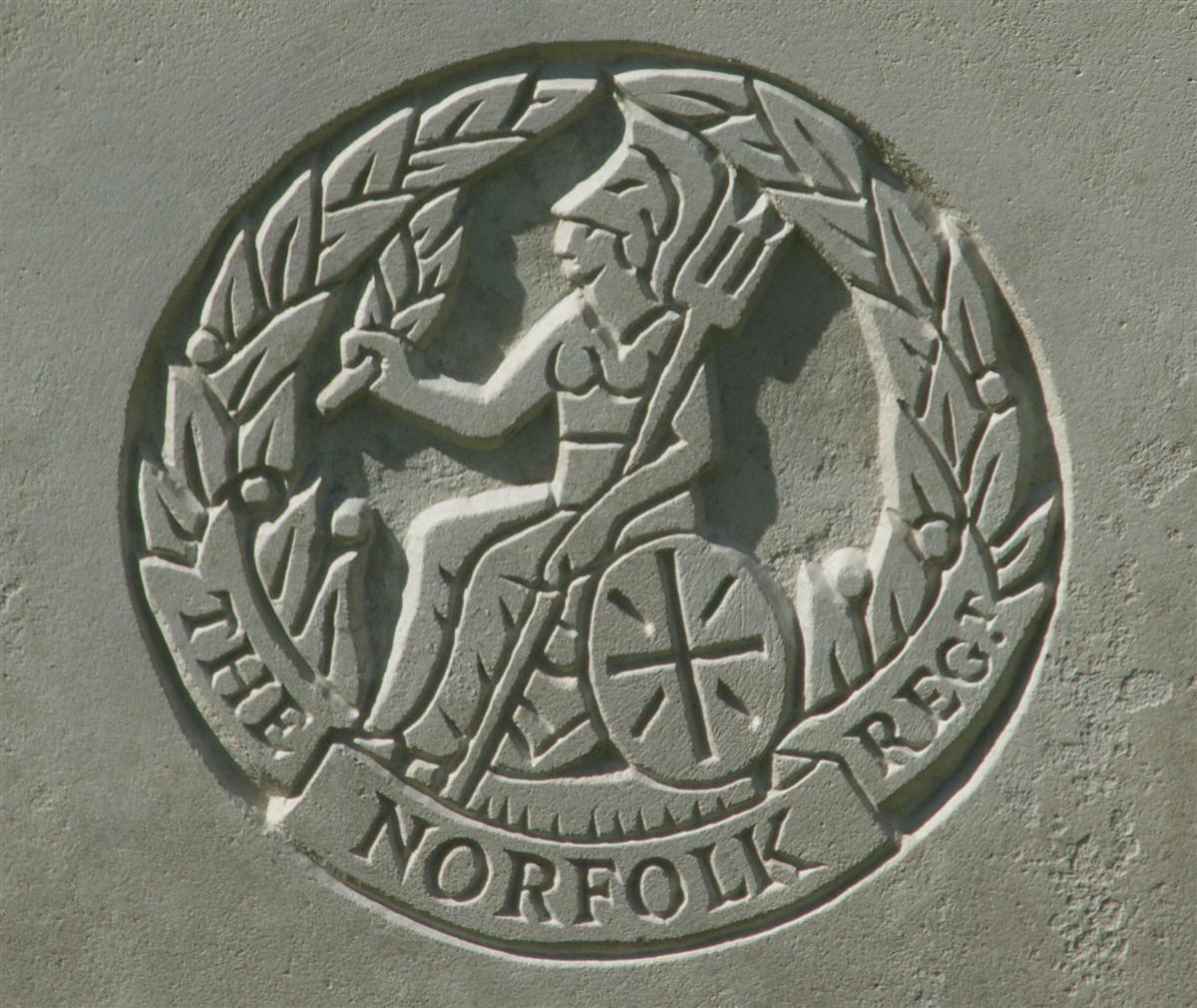
The regimental badge of the Norfolk Regiment, as used on CWGC headstones. |
From October to July 1916 the division manned a section of the line in the Ypres Salient, the infantry battalions taking turns to man the front line, a dangerous activity, but one that all infantrymen became accustomed to. At the end of July the entire division was moved south, they were headed for the Somme, where the Allied offensive has been raging since the beginning of the month.
The first month on the Somme was spent preparing for an attack that didn’t happen, followed by a short period of rest. Then, in early September, the division was transferred to XIV Corps on the right hand (southern) end of the British front, its right flank on the northern bank of the River Somme. The Corps was preparing to attack on as a part of 4th Army’s offensive along the line from Gueudecourt to Morval.
The offensive, known as the Battle of Flers-Courcelette, is renowned for the first use of tanks on the battlefield. It began on 15 September 1916; the 6th Division were faced with a formidable German defensive position known as The Quadrilateral. The division was allocated 3 of the new machines, the Divisional history records: It was the first occasion on which tanks were employed, and as far as the Division was concerned was a failure, for of the three allotted to the 6th Division two broke down before starting, and the third, moving off in accordance with orders long before the infantry, had its periscope shot off, its peep-holes blinded, was riddled by armour-piercing bullets, and had to come back without achieving anything.
The Divisional History summarises: The 16th Infantry Brigade attacked on a battalion front - one company of the Bedfords bombing up the trench from Leuze Wood, and the remainder over the open to the north against the south-west face. The Buffs and York and Lancasters supported the attack, but, in spite of the greatest gallantry, could not take the Strong Point.
The 1st Leicesters and the Norfolks, passing through the entrenched Foresters and Suffolks, attacked the Quadrilateral from the north-west with equal drive, but they too failed. Some ground, however, was made, and by 10 a.m. the 16th Infantry Brigade on the south, and the 71st Infantry Brigade on the north, were digging in close to the enemy's wire and trenches.
The Norfolks suffered 459 casualties – including Sgt Benjamin Povey.
The news reached Newbury a month later and his family inserted a notice in the paper:
Newbury Weekly News, 26 October 1916 – Killed in Action
POVEY – Sept 15 in France, Sergt Benjamin Povey, of the Norfolk Regiment, son of Mrs Povey, of St Briavels, Shaw.
More detail was published in the news columns:
Newbury Weekly News, 26 October 1916 – Local War Notes
The War Office has informed Mrs H Povey, of St Briavels, Shaw, that her eldest son, Sergt Benjamin Povey, of the Norfolk Regiment, was killed in action on September 15th. Sergt Povey had joined up in September, 1914, and had been brought under the notice of the General of the Division for distinguishing himself on May 20, 1916, by attending to wounded men in a section of trench which was being heavily shelled. Mrs Povey lost a son in France in February, and has another son in France, while two more are still in England. All of them heeded their country’s call in the early days of the war, and joined up before Christmas, 1914.
Being ‘brought under notice of the General of the Division’ probably means that he was awarded a Divisional Parchment Certificate. These awards were issued by each division to men who performed bravely, but whose gallantry did not merit a higher award, such as a Mention in Despatches or a Military Medal.
Benjamin’s body was never identified; his name is remembered on the massive memorial to the missing of the Somme at Thiepval.
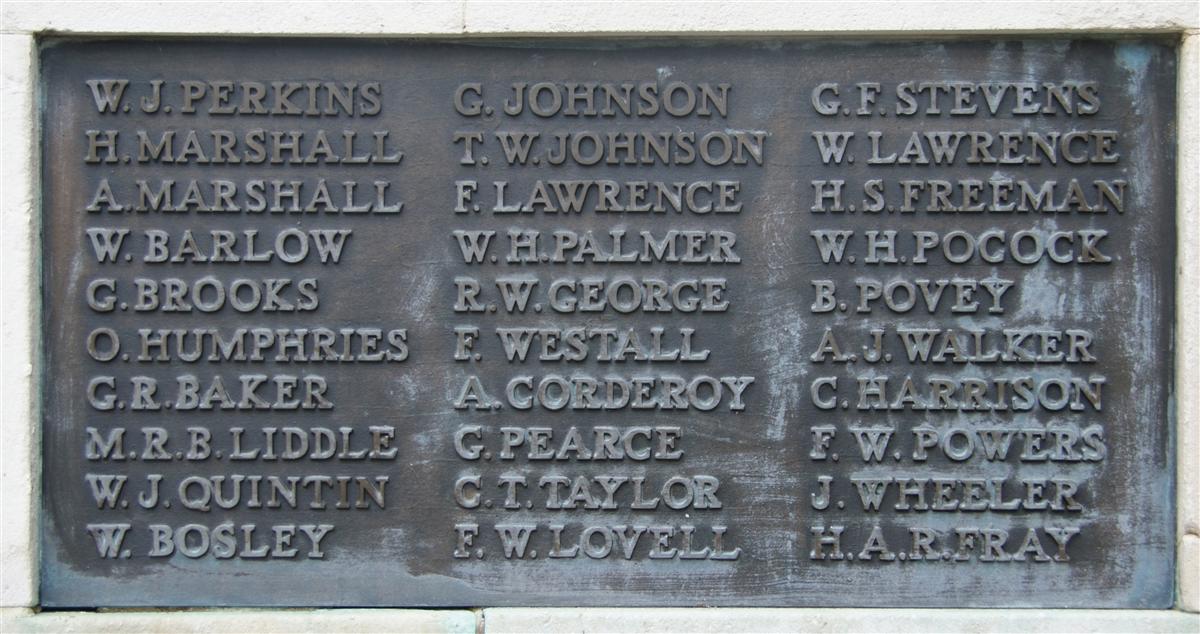
Benjamin's name on Newbury War Memorial (middle right) |
Locally he is remembered on the Newbury Town War Memorial and on the parish memorial from St Mary’s Speenhamland – the Speenhamland Shrine – sited in St Nicolas, Newbury, since the demolition of St Mary’s in the 1970s. He was also named on the memorial placed in his old school in Speenhamland (now lost).
He was, of course, also remembered by his family:
Newbury Weekly News, 12 September 1918 – In Memoriam
In ever loving memory of Sergt B Povey, 9th Norfolk Regt, who was killed in action, September 15th, 1916. Mother, Sisters and Brothers.
The family had suffered another loss in France when William was killed in action on 13 February 1916, seven months before Benjamin.
Most instances where brothers are recorded on the Newbury Town War Memorial are obvious - because the brothers’ names are grouped together (in general the names were distributed by lot). However, in the case of Will and his brother Benjamin this is not the case – Benjamin is on tablet 5 and Will on tablet 12.
Frederick, Harry and Arthur all survived the war.
